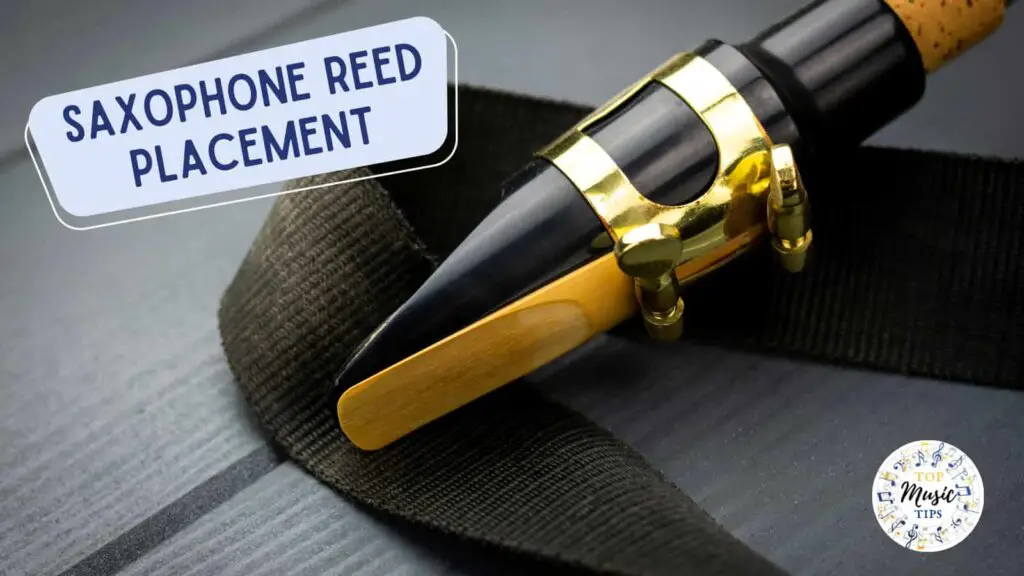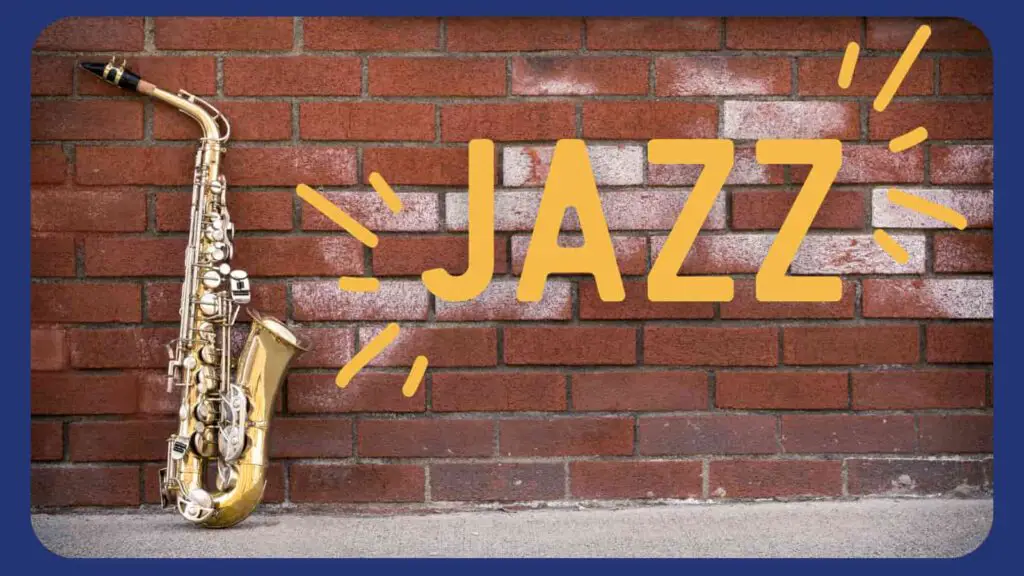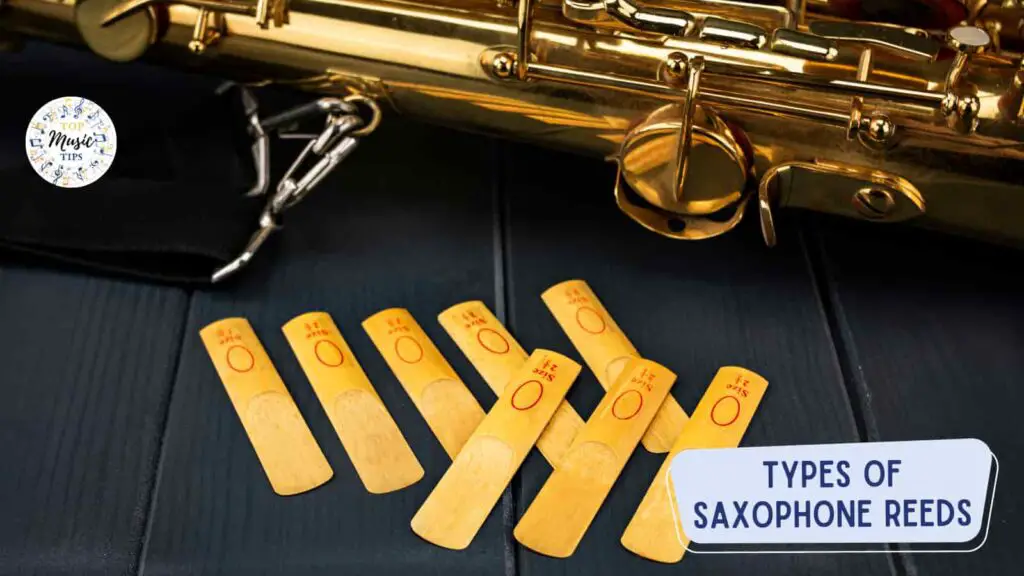Playing the saxophone is an art form that requires both technical skill and musicality. One often overlooked aspect of saxophone playing is the proper placement of the reed.
Reed placement has a significant impact on the sound, tone, and overall performance of the saxophone. In this article, we will explore the importance of saxophone reed placement, discuss the factors affecting it, provide techniques for proper placement, and address common mistakes to avoid.

Importance of Saxophone Reed Placement
The placement of the reed on the mouthpiece of a saxophone is crucial as it directly affects the instrument’s sound and playability.
Note: A well-placed reed allows for better control, articulation, and projection. It also influences the saxophone’s tonal qualities, such as brightness, warmth, and resonance. Proper reed placement is a fundamental aspect of achieving the desired sound and tone.
Types of Saxophone Reeds
Before diving into the specifics of reed placement, it is essential to understand the different types of saxophone reeds available. Saxophone reeds come in various materials, including cane and synthetic options.
Each type has its unique characteristics and suits different playing styles and genres. Experimenting with different reeds can help saxophonists find the one that best suits their preferences.
Learn more about the different types of saxophone reeds and how to care for them by clicking the picture above.
Fun Fact: Did you know that there are nine different types of saxophones? These include the sopranissimo, sopranino, soprano, alto, tenor, baritone, bass, contrabass, and subcontrabass saxophones.
Although not all of them are commonly played in bands, the most frequently seen saxophones in concert, classical, and marching bands are the alto saxophone, tenor saxophone, and baritone saxophone.
Factors Affecting Reed Placement
Several factors influence the placement of the reed on the saxophone mouthpiece. The angle, position, and tightness of the ligature play significant roles in determining the optimal placement.
Additionally, the saxophonist’s embouchure, air support, and mouthpiece selection contribute to the overall reed placement. It is crucial to understand these factors and their impact on sound production to achieve the desired results.
Proper Reed Placement Techniques
Note: Achieving proper reed placement requires a combination of experimentation and knowledge.
Begin by aligning the tip of the reed with the tip of the mouthpiece. The ligature should be positioned evenly, ensuring equal pressure distribution across the reed. Adjustments can be made by sliding the reed slightly up or down, depending on the desired response and tonal characteristics.
Common Mistakes to Avoid
When it comes to reed placement, there are some common mistakes that saxophonists should avoid.
- Placing the reed too high or too low on the mouthpiece can result in inconsistent sound production and difficulties in playing.
- Uneven ligature pressure can cause the reed to vibrate improperly, affecting tone and projection. It is crucial to find the right balance and make small adjustments to achieve optimal reed placement.
Effects of Incorrect Reed Placement
Incorrect reed placement can have noticeable effects on saxophone performance. Placing the reed too high may cause the sound to be thin and shrill, while placing it too low can result in a muffled or dull tone. Poor reed placement can also lead to difficulties in articulation, intonation problems, and increased resistance while playing.
Here is a list of how to know if your reed is placed incorrectly.
Uneven tone production: Placing the reed off-center or misaligned on the mouthpiece can result in an uneven distribution of vibrations across the reed, leading to inconsistent and unbalanced tone quality.
Difficulty in producing sound: If the reed is not aligned properly with the tip of the mouthpiece, it can impede the flow of air, making it challenging to produce a clear and resonant sound. This can result in a muffled or muted tone.
Intonation issues: Improper reed placement can affect the saxophone’s intonation, causing certain notes to be sharp or flat. Inaccurate pitch can make it challenging to play in tune with other instruments or ensembles.
Limited dynamic range: When the reed is not placed correctly, it can restrict the player’s ability to achieve a wide range of dynamics. It may be difficult to produce soft, delicate sounds or strong, powerful tones when the reed is not positioned optimally.
Decreased responsiveness: Incorrect reed placement can reduce the saxophone’s responsiveness, making it more challenging to control articulation, attacks, and releases. The saxophonist may experience a delay or lack of precision in their playing.
Reduced projection and projection control: The projection of sound may be compromised when the reed is not properly aligned. This can result in a weaker and less focused sound, affecting the ability to project the sound over longer distances or in a group setting.
Increased resistance or difficulty in playing: Poor reed placement can create additional resistance when blowing air through the instrument, making it physically more demanding to play. This increased resistance can lead to fatigue and limit the player’s endurance.
Note: Proper reed placement is key to achieving optimal sound and tone on the saxophone. When the reed is placed correctly, it allows for a balanced and resonant sound. The saxophonist can control the dynamics, articulation, and expression more effectively. By experimenting with different reed placements, saxophonists can find the sweet spot that suits their playing style and desired tone quality.
Reed Placement for Different Saxophone Types
Different types of saxophones, such as soprano, alto, tenor, and baritone, may require slight variations in reed placement.
The size and shape of the mouthpiece and the saxophone’s overall design influence the optimal placement. It is essential to consider these factors and make adjustments accordingly. Consulting with saxophone teachers or experienced players who specialize in the specific saxophone type can provide valuable guidance in finding the ideal reed placement.
Reed Placement for Jazz and Classical Styles
The style of music being played also impacts the preferred reed placement. In jazz, where a brighter and more expressive sound is often desired, saxophonists may opt for a slightly higher reed placement.

This allows for increased projection and better control during fast passages and improvisation. In classical music, where a more focused and centered tone is often sought after, saxophonists may place the reed slightly lower to achieve a warmer and more classical sound.
Tips for Reed Maintenance
Proper reed maintenance is essential for optimal performance and longevity. After each playing session, saxophonists should remove the reed from the mouthpiece and store it in a reed case or holder to prevent warping or damage. It is recommended to rotate reeds regularly to allow them to dry out and avoid overuse of a single reed. Additionally, keeping reeds clean and free from debris can help maintain their responsiveness and playability.
The Role of Ligatures in Reed Placement
Ligatures play a vital role in securing the reed to the mouthpiece and influencing its vibration and response. Different ligature designs and materials can affect the overall sound and reed performance. When placing the ligature, ensure it is evenly tightened, providing equal pressure distribution on the reed. Experimenting with different ligature positions and materials can help saxophonists find the combination that produces the desired sound and tonal characteristics.
Reed Placement for Beginners
For beginners learning the saxophone, proper reed placement is crucial for developing good playing habits and technique. It is recommended to seek guidance from a qualified saxophone teacher who can provide instruction on correct reed placement. Teachers can help beginners understand the fundamentals and ensure they start with a solid foundation. Developing a consistent and accurate reed placement technique from the beginning sets the stage for future progress and growth as a saxophonist.
Frequently Asked Questions (FAQs)
Q: Can reed placement drastically change the sound of my saxophone?
A: Yes, reed placement has a significant impact on the sound and tone of the saxophone. Proper placement can enhance the instrument’s qualities and allow for better control and expression.
Q: Should I use different reeds for different styles of music?
A: It is not necessary to use different reeds for different styles of music. However, reed placement adjustments can help achieve the desired sound and tonal characteristics for specific genres.
Q: How often should I change my saxophone reed?
A: The lifespan of a saxophone reed depends on various factors, including playing frequency and care. On average, reeds may last anywhere from a few weeks to a couple of months.
Q: Can I reuse reeds that I have used in the past?
A: It is possible to reuse reeds that have been properly cared for and maintained. However, reeds do wear out over time and lose their responsiveness. It is recommended to replace reeds once they become worn or damaged to ensure optimal performance.
Q: Can reed placement improve my technique?
A: Reed placement itself may not directly improve technique, but it can enhance your ability to control the sound and articulation. Developing good technique requires focused practice and guidance from a qualified instructor.
Conclusion
Q: Where can I find saxophone reeds?
A: Saxophone reeds can be found at music stores, both physical and online. They are available in different brands, strengths, and materials to suit individual preferences.
Q: Can I use a reed from a different saxophone type on my instrument?
A: It is generally not recommended to use reeds from a different saxophone type. Each saxophone type requires reeds specifically designed for its mouthpiece and playing characteristics.
Q: How do I know if my reed needs to be replaced?
A: Signs that a reed may need to be replaced include warping, cracks, loss of responsiveness, and a significantly altered sound quality.
Q: Are synthetic reeds better than cane reeds?
A: The choice between synthetic and cane reeds is subjective and depends on personal preference. Both types have their advantages and disadvantages, and saxophonists should experiment to find the one that suits them best.
Read this article to learn more about different Types of Saxophone Reeds
Q: Can I improve reed placement through self-practice?
A: While self-practice can help improve reed placement to some extent, seeking guidance from a qualified instructor or experienced saxophonist can significantly accelerate the learning process and ensure proper technique.
We hope this article has been helpful and informative for you in your musical journey. Please let us know if there is anything that we could add or change to make this article a better resource for our readers.
Please e-mail us at: [email protected] to let us know how we are doing!
Disclaimer: This post may contain affiliate links. We only recommend high-quality products that are used and recommended by real musicians. If you use these links to buy something we earn a small commission.

